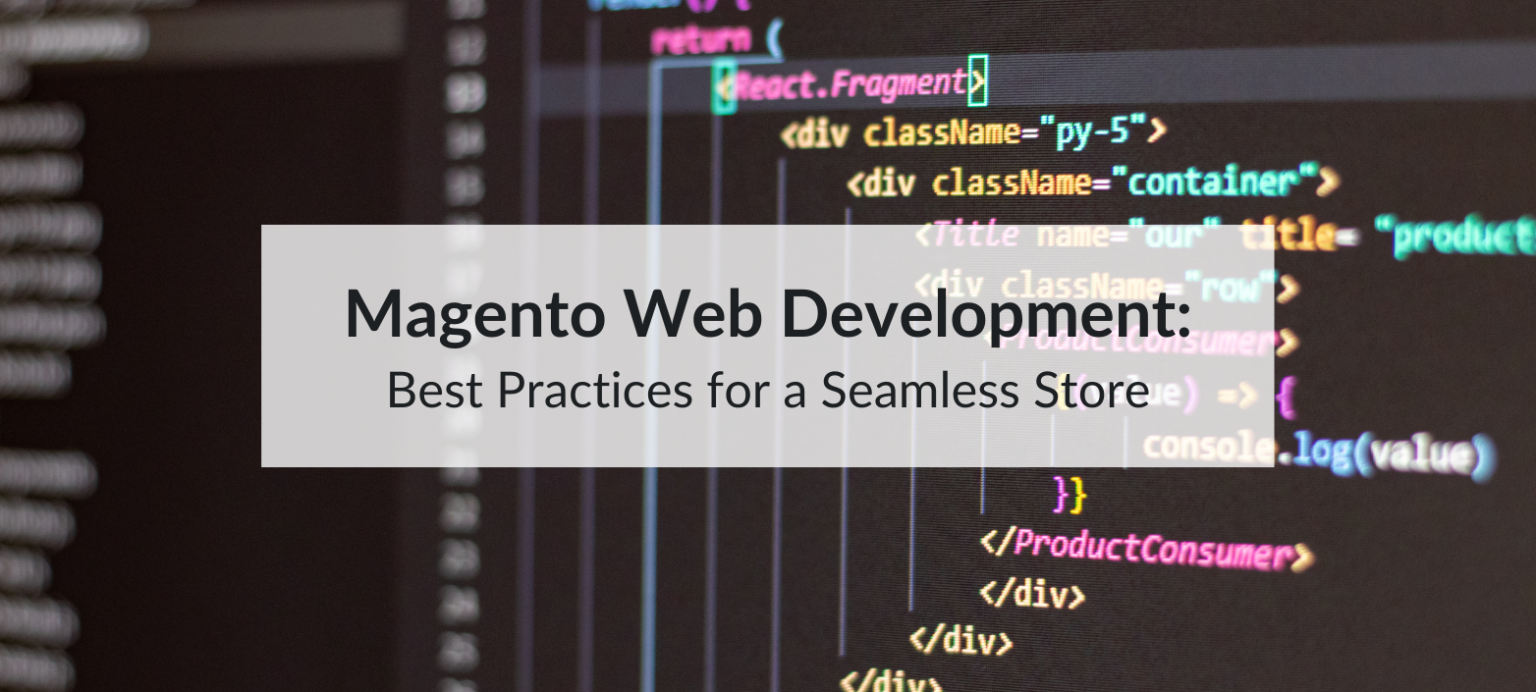Magento web development is the process of building an e-commerce store using the Magento (Adobe Commerce) platform. A lot of brands and business owners choose Magento because it is scalable, extremely customizable, SEO-friendly, and highly secure. Not to mention, there is a large Magento community of developers and passionate experts ready to support businesses. Magento offers a wide range of themes and plugins/extensions that can enhance any store’s functionality. Many of these are free and highly functional, making it easier for business owners to invest elsewhere.
In this article, we’ll cover the best practices for Magento web development to ensure your store runs seamlessly and performs optimally.
Best Practices for Magento Web Development

1. Planning is the Foundation
Like any successful business project, planning is key. Before you dive into Magento development, start by setting clear objectives for your store. Define your target audience, outline the products you plan to sell, establish a timeline, and most importantly, set your budget.
2. Decide on Your Development Team
Before diving into Magento web development, it’s essential to decide who will build and manage your store. Consider whether you’ll hire a dedicated Magento developer, work with a specialized Magento agency, or take on the project in-house. Each option has its pros and cons:
In-House Team
Ideal for businesses with ongoing development needs and technical expertise. Having an in-house team provides direct control but may require more resources.
Freelancer
A cost-effective solution for smaller projects or specific tasks, but it may lack long-term support and scalability.
Magento Agency
Agencies offer comprehensive expertise and support, often ideal for complex or high-budget projects. They bring specialized knowledge and can handle everything from initial setup to ongoing maintenance.
This choice will affect your budget, timeline, and the overall functionality of your store, so weigh your options carefully based on your specific needs.
3. Choose the Right Magento Hosting Provider
Your hosting provider significantly affects your store’s speed, security, and scalability. Look for a provider with experience in Magento hosting, as they’ll have optimized solutions that support high performance and rapid load times, which are essential for a good customer experience. Make sure your hosting plan includes SSL, backup solutions, and high uptime guarantees to keep your store reliable and secure.
4. Choose and Customize a Magento Theme
Choosing the right theme is one of the first visual decisions you’ll make for your Magento e-commerce store. Start with a theme that aligns with your brand and has the features you need. Many Magento themes are mobile-responsive, which is crucial since mobile traffic dominates online shopping.
Once you have your theme, customize it to fit your brand identity. Adjust colors, typography, and layouts to create a unique, branded experience that makes your store stand out.
5. Configure Your Product Catalogue
The product catalog is the heart of your e-commerce store. Carefully organize your products into categories and subcategories to make browsing easy for customers. Attention to detail with SKUs and product descriptions is crucial here. Use clear, keyword-optimized product descriptions and high-quality images to help customers make informed decisions and improve your store’s SEO.
6. Prioritize SEO from the Start
Magento is known for being SEO-friendly, but there are best practices to enhance this further. Focus on the basics, like keyword-optimized titles, meta descriptions, and alt tags for images. Organize URLs to be clear and intuitive, and create an XML sitemap to help search engines index your store more effectively. Magento’s built-in tools, such as URL rewrites and Google Analytics integration, make it easier to monitor and optimize your store’s SEO.
7. Choose a Reliable Payment Provider
A smooth and secure payment process is essential for building customer trust. Magento supports multiple payment gateways, allowing you to offer options like PayPal, Stripe, and Authorize.Net. Consider your target audience’s preferences when selecting payment options and ensure the process is quick and reliable to reduce cart abandonment rates.
8. Choose a Shipping Provider
Shipping is another critical aspect of the e-commerce experience. Magento’s flexibility allows you to integrate various shipping providers and calculate real-time shipping rates. Whether offering standard, expedited, or international shipping, provide options that meet customer expectations. Using reliable carriers and transparent shipping costs can increase customer satisfaction and repeat purchases.
9. Set Up Customer Support Channels
Great customer service can set you apart from competitors. Make it easy for customers to contact you with questions or issues. Magento’s extensions offer live chat, email support, and customer account management tools, making it easier to manage inquiries and assist customers efficiently. High-quality support contributes to positive reviews and helps build long-term customer loyalty.
10 Prioritize Security in Magento Web Development
Magento is known for its robust security features, but taking extra steps will further protect your store and customer data. Implement SSL certificates for secure data transmission, set up two-factor authentication (2FA), and use a reliable firewall to prevent unauthorized access. Regularly update your Magento software and extensions to the latest versions to patch vulnerabilities and strengthen security.
11. Prepare for Launch
Before launching, conduct thorough testing across different devices and browsers. Check for page loading times, ensure all links work correctly, and confirm that the payment and checkout processes run smoothly. Use Magento’s staging environment to identify potential issues without disrupting your live store.
12. Post-Launch: Ongoing Magento Support
Launching your store is just the beginning. Regular updates, monitoring, and maintenance are essential to keep your store running smoothly. Consider setting up automated reports to monitor key metrics, such as sales performance, inventory levels, and customer engagement. Regularly review your site’s analytics to optimize areas that may need improvement.
Working with a Magento developer or agency for ongoing support can be invaluable. They can address bugs, enhance performance, and ensure your store remains compliant with Magento’s latest security updates.
Conclusion
With these best practices, your Magento web development project will be on the right track toward a seamless, high-performing e-commerce store that meets both your business needs and customer expectations. Remember, a well-planned and optimized Magento store is a powerful asset that can drive growth, improve conversions, and create a memorable shopping experience for your customers.

